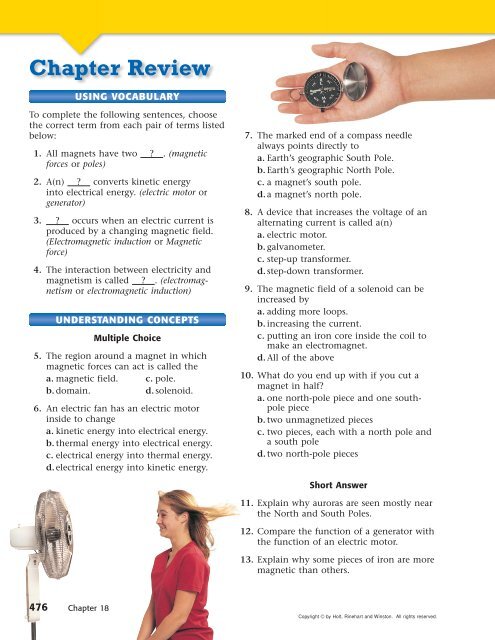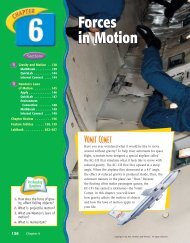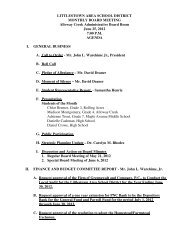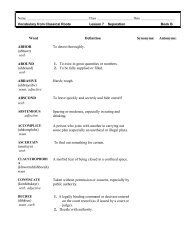Electromagnetism Electromagnetism
Electromagnetism Electromagnetism
Electromagnetism Electromagnetism
Create successful ePaper yourself
Turn your PDF publications into a flip-book with our unique Google optimized e-Paper software.
Chapter Review<br />
USING VOCABULARY<br />
To complete the following sentences, choose<br />
the correct term from each pair of terms listed<br />
below:<br />
1. All magnets have two ? . (magnetic<br />
forces or poles)<br />
2. A(n) ? converts kinetic energy<br />
into electrical energy. (electric motor or<br />
generator)<br />
3. ? occurs when an electric current is<br />
produced by a changing magnetic field.<br />
(Electromagnetic induction or Magnetic<br />
force)<br />
4. The interaction between electricity and<br />
magnetism is called ? . (electromagnetism<br />
or electromagnetic induction)<br />
UNDERSTANDING CONCEPTS<br />
Multiple Choice<br />
5. The region around a magnet in which<br />
magnetic forces can act is called the<br />
a. magnetic field. c. pole.<br />
b. domain. d. solenoid.<br />
6. An electric fan has an electric motor<br />
inside to change<br />
a. kinetic energy into electrical energy.<br />
b. thermal energy into electrical energy.<br />
c. electrical energy into thermal energy.<br />
d. electrical energy into kinetic energy.<br />
476<br />
Chapter 18<br />
7. The marked end of a compass needle<br />
always points directly to<br />
a. Earth’s geographic South Pole.<br />
b. Earth’s geographic North Pole.<br />
c. a magnet’s south pole.<br />
d. a magnet’s north pole.<br />
8. A device that increases the voltage of an<br />
alternating current is called a(n)<br />
a. electric motor.<br />
b. galvanometer.<br />
c. step-up transformer.<br />
d. step-down transformer.<br />
9. The magnetic field of a solenoid can be<br />
increased by<br />
a. adding more loops.<br />
b. increasing the current.<br />
c. putting an iron core inside the coil to<br />
make an electromagnet.<br />
d. All of the above<br />
10. What do you end up with if you cut a<br />
magnet in half?<br />
a. one north-pole piece and one southpole<br />
piece<br />
b. two unmagnetized pieces<br />
c. two pieces, each with a north pole and<br />
a south pole<br />
d. two north-pole pieces<br />
Short Answer<br />
11. Explain why auroras are seen mostly near<br />
the North and South Poles.<br />
12. Compare the function of a generator with<br />
the function of an electric motor.<br />
13. Explain why some pieces of iron are more<br />
magnetic than others.<br />
Copyright © by Holt, Rinehart and Winston. All rights reserved.





